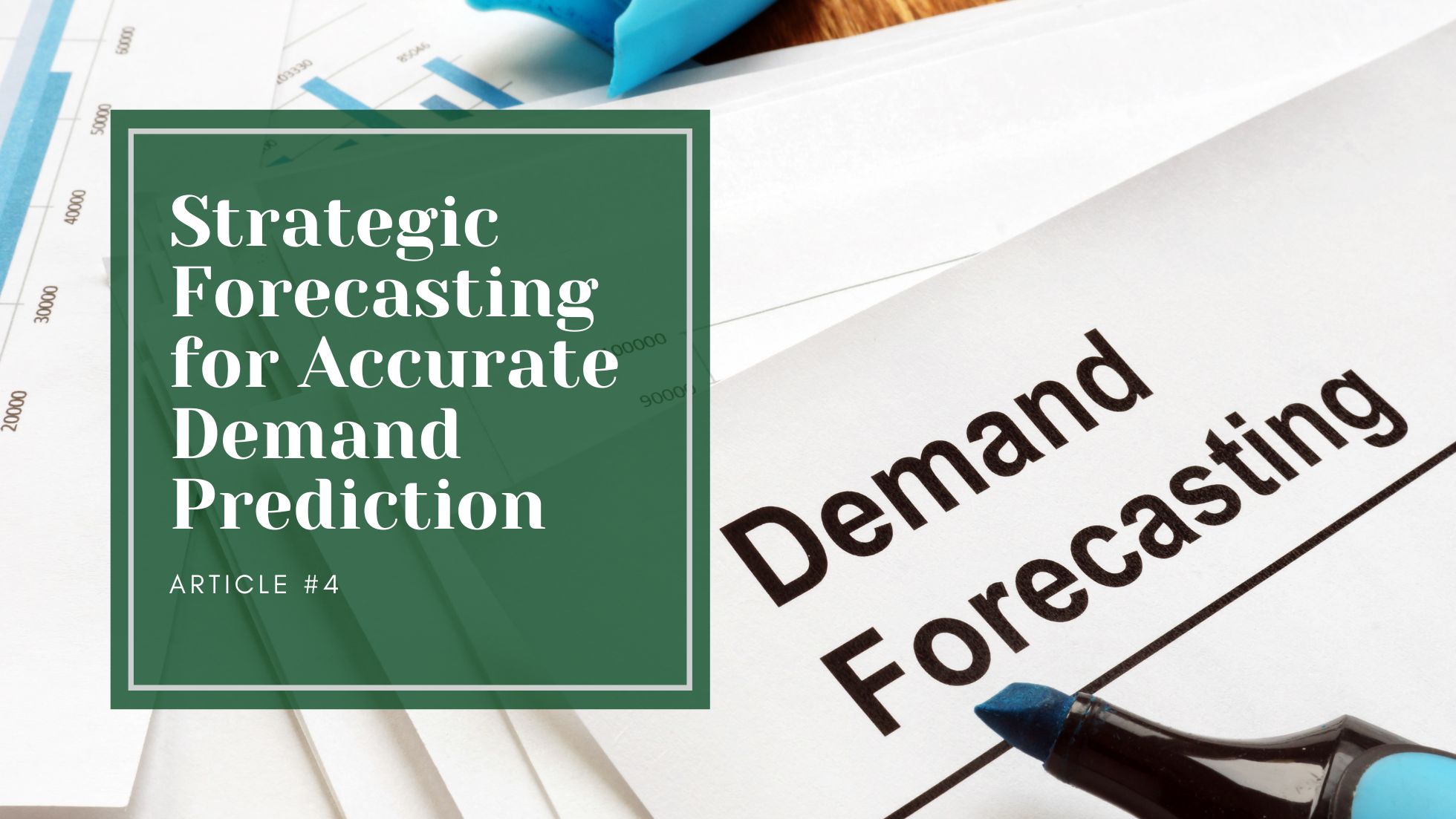Accurately forecasting demand is not just a competitive advantage—it’s a necessity. Proper demand forecasting can lead to increased profitability, reduced inventory costs, and the prevention of lost sales due to stockouts. DEMAND, a cutting-edge strategic forecasting tool, offers a comprehensive solution. By integrating specialized tools with your ERP system, DEMAND analyzes market trends and product demand, providing short-term, medium-term, and long-term forecasts. In this blog, we’ll delve into the features, methodologies, and benefits of DEMAND.
The Importance of Demand Forecasting
Forecasting demand is critical for several reasons:
- Profitability: Accurate forecasts ensure you produce or stock just enough to meet customer demand, reducing waste and maximizing profits.
- Inventory Management: By predicting demand accurately, businesses can maintain optimal inventory levels, reducing carrying costs and avoiding overstock situations.
- Risk Mitigation: Proper forecasting helps mitigate the risk of stockouts, ensuring customer satisfaction and preventing lost sales.
DEMAND: Analytical Demand Forecasting Methods
DEMAND is a 100% web application designed for large-scale sales data processing and product demand forecasting. Whether your business operates locally or globally, DEMAND efficiently handles extensive sales data and predicts product demand accurately. This ensures reliable forecasts that support informed decision-making and operational efficiency.
Structure and Capabilities
Engineered for Large-Scale Data: DEMAND processes extensive sales data and predicts product demand with high precision. This scalability makes it suitable for businesses of all sizes and industries.
Ten Selected Methods for Effectiveness: DEMAND incorporates ten advanced forecasting methods sourced from contemporary literature. These methods are tailored to address various forecasting challenges, such as seasonal fluctuations and market dynamics.
Advanced Forecasting Methodologies
DEMAND employs a parallel application of multiple cross-validated methods. While it’s not mandatory to apply all methods simultaneously, combining and cross-validating results is recommended for highly accurate forecasts. Here’s an overview of the methodologies used:
- ARIMA (AutoRegressive Integrated Moving Average)
- Uses past values and differencing to forecast future values.
- Effective for time series data with trends and seasonality.
- Neural Networks
- Learns patterns in data, powerful for complex, nonlinear relationships.
- Suitable for sequential forecasting tasks.
- Croston Methods
- Designed for intermittent demand.
- Separates forecasting into models for the probability and size of non-zero demand periods.
- SSA Decomposition Models (Singular Spectrum Analysis)
- Decomposes time series into components like trend and seasonality using eigenvector techniques.
- Useful for nonlinear patterns.
- Adaptive Smoothing
- Adjusts smoothing parameters automatically based on data.
- Ideal for responding to changing trends and patterns.
- Exponential Methods
- Assigns exponentially decreasing weights to past data.
- Effective for capturing trends and seasonal patterns.
- Regression Analysis
- Forecasts demand based on relationships with independent variables.
- Suitable for identifying factors influencing sales.
- Recurrent Plots
- Visualizes autocorrelation by comparing a time series with its lagged values.
- Helpful for identifying cyclic patterns.
- Maximum Entropy
- Estimates probability distributions using maximum information entropy principles.
- Suitable for uncertain or sparse data.
- Holt-Winters’ Seasonal Method
- Extends exponential smoothing to include seasonal components.
- Effective for forecasting seasonal time series data.
Integration and Flexibility
DEMAND integrates seamlessly with your ERP system via web services, ensuring smooth data flow and real-time updates. Additionally, it can operate independently by reading Excel or CSV files. Results can be exported in Excel or CSV format for further analysis or reporting.
The DEMAND Advantage
User-Friendly Environment: DEMAND combines classical and cutting-edge forecasting methods in a user-friendly platform. Automatic parameter tuning simplifies the process, making advanced forecasting accessible even to non-experts.
Comprehensive Toolkit: By offering a variety of validated methods, DEMAND provides a robust toolkit for businesses to anticipate demand trends with precision. This enables optimal inventory management, cost minimization, and capitalizing on emerging opportunities.
Conclusion
Accurate demand forecasting is a cornerstone of successful business operations in today’s dynamic markets. DEMAND provides businesses with a comprehensive solution to anticipate market needs effectively and optimize their operations. By leveraging advanced methodologies and seamless integration with ERP systems, DEMAND empowers businesses to make informed decisions, enhance profitability, and stay ahead of the competition. Embrace the future of demand forecasting with DEMAND and transform your business operations for sustained success.

Great post! I learned something new and interesting. Thank you!
This was a delight to read. You show an impressive grasp on this subject! Keep up the incredible work!
This is excellent! I can only imagine the dedication and time it took to implement these advanced methodologies.